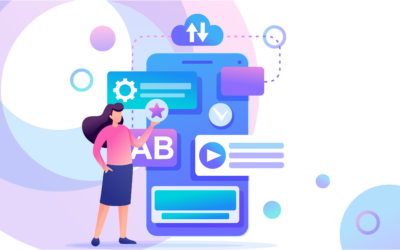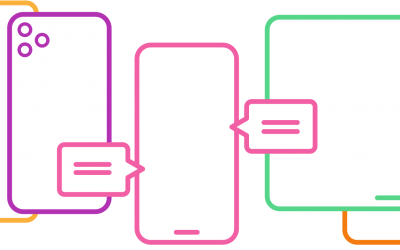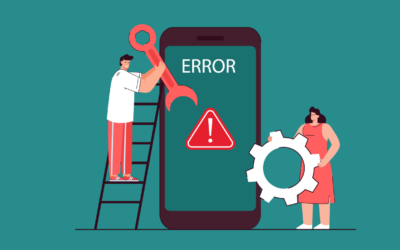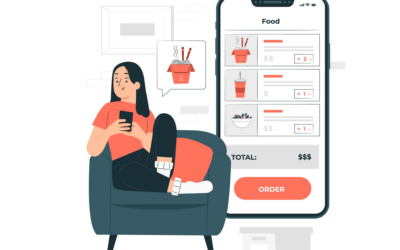Table Of Content
- How is app performance typically evaluated, and what conditions commonly lead to performance issues?
- Monitoring Vs. Observability
- OpenTelemetry in the Observability Landscape
- In Which Ways Can You Monitor a Mobile App?
- Mobile App Performance Tools
- Capabilities of Monitoring and Observability
- Market Trends for Monitoring and Observability
- Krasamo’s Mobile Performance Services
In today’s digital age, where the mobile app marketplace is saturated with numerous options, ensuring that your application stands out is more crucial than ever. App performance directly influences user satisfaction, retention rates, and the app’s success. Thus, investing in app performance monitoring and optimization is a technical necessity and a strategic business decision to secure a competitive edge in the app ecosystem.
Performance monitoring is a key challenge for mobile engineers because it involves continuously tracking and analyzing the performance of a mobile application in various conditions.
Engineers must ensure smooth user experiences despite hardware and software diversity, limited processing power, and varying internet speeds. Additionally, quickly identifying and fixing performance issues is crucial to maintaining user satisfaction and engagement, making performance monitoring an ongoing and complex task.
How is app performance typically evaluated, and what conditions commonly lead to performance issues?
Mobile apps require visibility into the health and performance of applications across various infrastructures. In the context of App Performance Monitoring (APM) and Observability, performance problems typically refer to issues (performance bottlenecks) that could impact applications’ functionality, availability, responsiveness, and user experience.
App performance is analyzed through various metrics such as load times, response times, crash rates, and user engagement. Various conditions create issues, including diverse device types, operating system versions, network speeds, and user interactions.
These can include slow response times, errors or crashes, memory leaks, inefficient code, resource utilization, and infrastructure or network configuration issues.
The focus on APM and observability suggests a broad approach to identifying, analyzing, and resolving such issues to ensure optimal application performance and reliability. This ensures apps remain responsive and stable, providing a seamless user experience across all scenarios.
Mobile app performance entails real-time monitoring of metrics, logs, and traces to diagnose and resolve issues quickly.
Additionally, mobile developers focus on scalability to handle the dynamic nature of cloud-native architectures, integration capabilities to consolidate data from multiple sources, and advanced analytics to derive actionable insights. These requirements support agile development and DevOps practices by facilitating continuous delivery and ensuring applications’ high availability and performance in these complex environments.
Monitoring Vs. Observability
Developers must work with these concepts and their differences to create a comprehensive strategy.
Monitoring in the context of mobile applications is the process of actively tracking and managing the performance and stability of mobile apps. It involves collecting and analyzing specific data types, such as app crash rates, response times, and network request failures, to detect abnormalities that might indicate problems, ensuring mobile apps meet user expectations and maintain high availability.
Observability empowers enterprises to proactively understand their mobile applications’ internal workings through external data, such as metrics, logs, and traces. This approach not only aids in troubleshooting but also provides deep insights into app behavior, user experience, and performance, enabling the identification of complex, unforeseen issues (unknown unknowns). As a crucial aspect of modern app development, observability extends beyond traditional monitoring by leveraging telemetry data for a comprehensive view of system health.
Telemetry is the automated process of collecting data from applications and systems. This data can include metrics, logs, traces, and other information types that help understand and analyze the performance and behavior of software applications. It’s essential for monitoring and observability, providing the raw data needed for in-depth analysis. Examples of telemetry in the app are User journey inside the application, response times, memory usage, etc.
- Logs are records of events within an application or its supporting infrastructure. They provide a chronological account of actions taken by the system, errors, system messages, and other diagnostic information. Logs are crucial for debugging and monitoring application behavior, as they offer insights into what the application was doing at a specific point in time. They are textual and can be generated by the application code or by the infrastructure components (like web servers or databases) the application interacts with.
- Traces refer to the detailed tracking of requests or transactions as they flow through the various components of an application, especially in distributed systems. Traces help in understanding the journey of a request, from its entry into the system through all the services it interacts with until it exits the system. This includes timing information, which helps identify latency issues and pinpoint the exact service or operation causing a delay.
Traces provide a detailed map of a request’s journey through an app architecture, highlighting how different components interact and where delays occur. This is essential for diagnosing and fixing performance bottlenecks. Developers analyze traces to determine the type of metrics to use.
- Metrics are numerical data that measure the operation of an application or system over time. Examples include device usage, memory usage, response times, error rates, and throughput. Metrics provide aggregated, high-level insights into the health and performance of systems and applications. Metrics are derived from the analysis of traces.
OpenTelemetry in the Observability Landscape
OpenTelemetry is a set of APIs, libraries, agents, and instrumentation that provide an open-source framework for collecting telemetry data (metrics, logs, and traces) standardized across distributed systems. Its importance lies in its ability to offer a unified and vendor-neutral method for observability, making it easier for developers and organizations to implement and switch between different monitoring and observability tools without being locked into a single vendor. Supporting OpenTelemetry enables tools to be more adaptable and interoperable, enhancing their utility and flexibility in a diverse tech ecosystem.
In Which Ways Can You Monitor a Mobile App?
You can monitor a mobile app through various methods, including:
- Real-time analytics to track user interactions and app performance. (customer journeys and user behavior)
- Crash analytics to identify and analyze app crashes.
- Performance metrics to measure load times, response times, and system resource usage (start-up times)
- User feedback to gather insights on app usability and issues.
- Start-up time, screen rendering,
- Page loading (web apps)
- Network performance monitoring to assess data transfer speeds and connectivity issues (network requests)
- Device and OS compatibility testing to ensure the app works across different hardware and software environments.
- Automated testing tools to continuously check for performance issues under various conditions.
Mobile App Performance Tools
Mobile App Performance Tools provide developers with insights and tools to identify and rectify performance issues in iOS, Android, and web apps. These tools offer critical insights into app health, performance, and security, bridging the gap between traditional APM approaches and the evolving requirements for observability.
It’s essential for developers to adapt APM strategies for mobile platforms. Performance monitoring tools enable detailed analysis of metrics, offering real-time optimization insights.
App performance monitoring tools allow for a detailed analysis of performance metrics within a console, offering real-time insights into potential areas for optimization based on various attributes. Key capabilities include transaction monitoring, infrastructure mapping, identifying performance issues, etc.
Modern technologies like AI and ML are integrated into these tools to offer proactive insights and predictions about system health. Developers need to adopt tools that support open standards like OpenTelemetry for unified data collection and analysis, emphasizing the need for comprehensive visibility into applications and infrastructure.
Developers can choose tools that support custom monitoring for specific app functionalities and enable them to set up alerts for significant performance changes. Commonly used tools include AppDynamics, Firebase, Dynatrace, Datadog, Splunk Mobile RUM, and New Relic.
Capabilities of Monitoring and Observability
- Observation of app behavior
- Mapping of infrastructure components
- Monitoring of mobile app and Apis
- User Journey monitoring and KPI analysis
- Explore and analyze telemetry data
- Identify and block vulnerabilities
- DevOps integration
- Performance testing and integration with testing tools
- AI-augmented capabilities
Market Trends for Monitoring and Observability
The rise of mobile and cloud-native applications, alongside shifts from traditional data centers to cloud architectures, is boosting the adoption of APM and observability tools. These tools, now more capable and easier to deploy, are increasingly embraced by mobile app developers. While open-source monitoring tools have improved and become more popular, commercial products remain key for generating in-depth telemetry insights. Organizations are merging open-source and commercial tools in their observability strategies, with open-source mainly handling data collection and commercial solutions providing advanced analysis, insights, and event management.
Krasamo’s Mobile Performance Services
- Performance Optimization: Enhancing app speed and efficiency.
- Feature Updates and Expansion: Adding new features or updating existing ones to improve functionality and user experience.
- UI/UX Redesign: Revamping the user interface and experience to modernize the app and improve usability.
- Security Enhancements: Implementing advanced security measures to protect user data and comply with regulations.
- Bug Fixes and Maintenance: Identify and resolve existing bugs and provide ongoing maintenance to ensure smooth operation.
- Integration Services: Incorporating third-party services or APIs to add new functionalities like payment gateways, social media, or analytics.
- Platform Expansion: Adapting the app for additional platforms or operating systems to reach a wider audience.
- App Analytics and Monitoring: Implementing analytics to gather insights on user behavior and app performance for informed decision-making.












Nice rundown on app performance monitoring and mobile app performance tho!
I totally get why the author emphasized the importance of app performance monitoring – it’s all about ensuring mobile app performance doesn’t tank user experience! In my experience as an IT project manager, leveraging OpenTelemetry for observability has been a total game-changer. It provides a unified framework for collecting metrics, logs, and traces, making it easier to troubleshoot issues and optimize mobile app performance. Kudos to the author for highlighting its value in enhancing mobile user experience!
I just finished reading this insightful post on App Performance Monitoring, and I must say it’s an absolute game-changer for mobile app development company professionals like myself! Your in-depth explanation of APM and observability is truly remarkable. Congratulations on creating such a valuable resource!
I wholeheartedly agree with this comprehensive list, highlighting the importance of integrating app performance monitoring to optimize mobile user experience. Excellent analysis!
Hey there! 👋 That’s a great point about app performance monitoring being crucial for securing a competitive edge in the app ecosystem. I’d love to know more about how you approach evaluating app performance – do you use any specific tools or frameworks? Can you elaborate on what conditions commonly lead to performance issues, and how APM helps mitigate these challenges? 🤔
I completely agree that APM is crucial for a mobile app development company to stay competitive! For evaluating app performance, I use a combination of tools like AppDynamics, Firebase, and Datadog. These tools help me track metrics such as load times, response times, crash rates, and user engagement. They also provide real-time monitoring, so I can quickly identify and fix issues that impact the user experience!
Meh, I use some standard tools like AppDynamics and New Relic for app performance monitoring. They provide real-time insights into potential areas for optimization. It’s all about tracking metrics like load times, response times, crash rates, etc. in a mobile app development company context.
I gotta say, this post hit home for me! As a seasoned software architect with experience in mobile development and consulting, I’ve seen firsthand how crucial app performance monitoring is. In my previous role, we implemented trace monitoring on an e-commerce app that was experiencing major latency issues – it saved us from endless debugging sessions!
Cheers to more efficient dev workflows!
I love where you’re goin’ with this, but I gotta say, it’s kinda broad – would’ve been great to see more specifics about mobile development and consulting best practices!
I wholeheartedly concur with your assertion that log analytics are paramount in optimizing mobile application development company experiences; their efficacy cannot be overstated.
I’ve worked with a few mobile app development company projects, and I gotta say, it’s super crucial to monitor those metrics you mentioned 📊. Load times and response times can make or break user engagement, especially on slower networks 📱. Observability is key here, as it allows devs to catch issues before they become major problems 👀. But yeah, understanding the diff between monitoring and observability will save a ton of time in the long run 🔍.